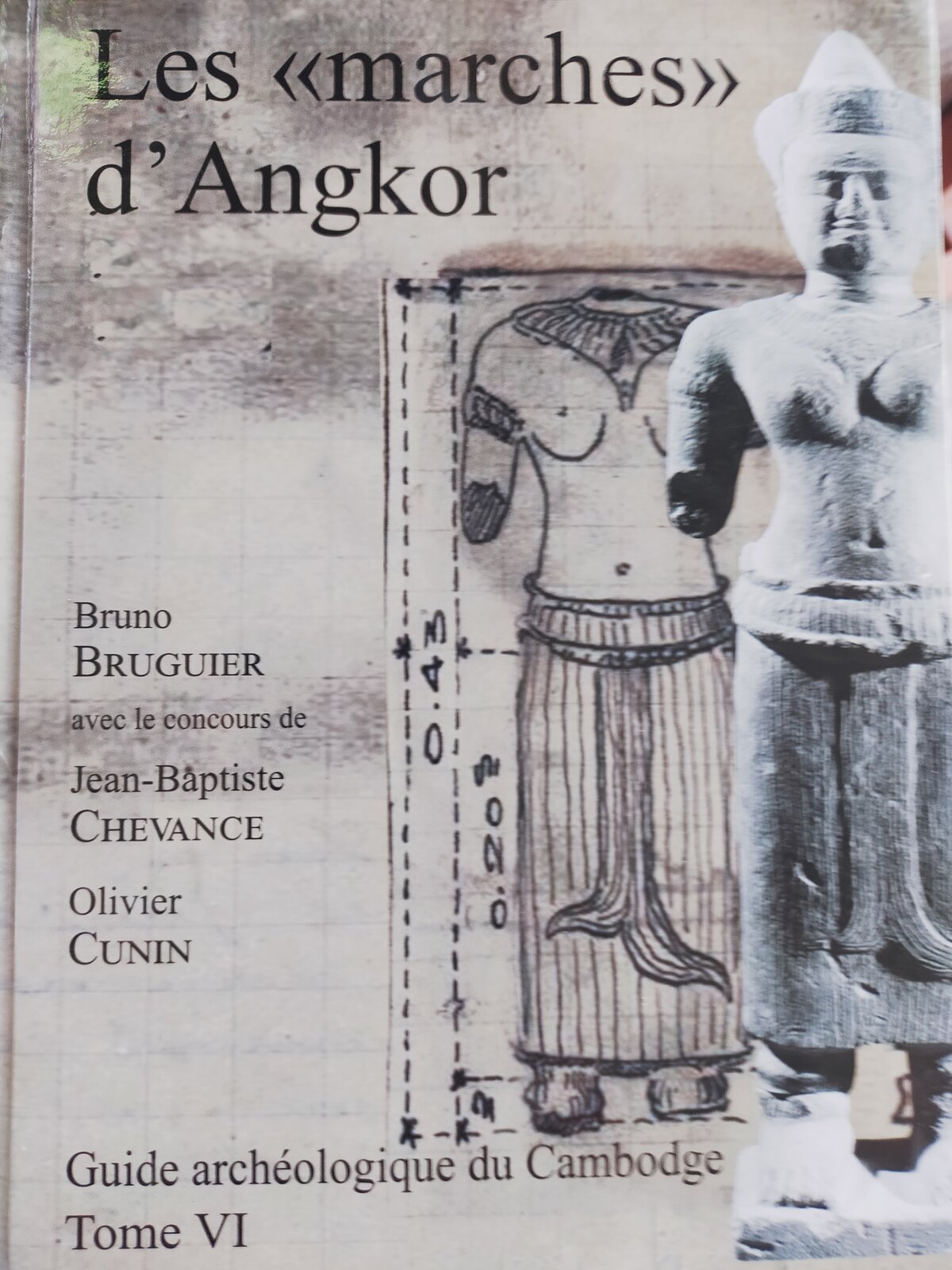Les "marches" d'Angkor | Guide archéologique du Cambodge | Archaeological Guide of Cambodia T. VI
by Bruno Bruguier & Jean-Baptiste "JB" Chevance & Olivier Cunin
The spatial development of pre-Angkorean and Angkorean religious and social systems in a vast area spreading from Tonle Sap Lake to Phnom Kulen.

Type: hardback
Publisher: JSRC Printing House, Phnom Penh
Published: 2020
Pages: 842
ISBN: 9789995055547
Language : French
ADB Library Catalog ID: ARC44
With many lesser-known and even so far unpublished sites, the author draws a vast spatial and chronological map of Angkor “periphery”, showing with a thorough analysis of past and present archeological finds how temples, canals and palaces became interconnected through the centuries.
Drawing from the works of pioneers such as Lunet de Lajonquiere, Aymonier, Moura, and later on Marchal, Finot, Parmentier, this monumental sum intends to put in evidence
- the ever-changing “building strategies“deployed by successive dynasties;
- the emergence of geographical poles around most significant temples, for instance Banteay Srei and the network connecting to Kulen Mountain;
- the paradox of an “Empire” with little concern for military constructions, profoundly religious and even theocratic, while never attempting to spread faith through invasions or coercicion.
Tags: archaeology, Angkor Wat, architectural styles, Khmer dynasties, architecture, Kulen Mountain, Phnom Kulen, Tonle Sap Lake, irrigation, hydraulic systems
About the Author

Bruno Bruguier
Archaeologist Bruno Bruguier (1952, Toulouse) is the author of the series Guides archéologiques du Cambodge (Archaeological Guidebooks of Cambodia), an exhaustive description of the archaelogical sites around the country in six volumes he wrote with his wife, Juliette Lacroix.
His doctoral thesis in Oriental studies (1994, under Bruno Dagens’ direction) dealt with the roofing techniques and styles in Ancient Cambodia, and he also published on the ancient Khmer bridges or the Kampot caves. He took part in several scientific missions in Cambodia and Southeast Asia for the World Monuments Fund, UNESCO and EFEO, focusing on heritage conservation. He joined EFO in 1991, and taught at Phnom Penh Royal University of Fine Arts, Department of Archaelogy, in 1998.
In charge of the creation of the new EFEO Documentation Center in Paris, Bruno Bruguier authored a Bibliography of Ancient Cambodia (Bibliographie du Cambodge ancien, 2 vols, 1998 – 1999, PEFEO, Paris, with Phann Nady).
About the Contributor

Jean-Baptiste "JB" Chevance
After graduating from École du Louvre in 1997, and obtaining a PhD in Khmer Archeology in 2011 at Sorbonne-Paris III University, Jean-Baptiste Chevance has focused his research on the Phnom Kulen Mountain, 25 miles north-east from Angkor proper.
Prospecting the mountainous area right after the demise of the Khmer Rouge guerilla, the archeologist has worked with EFEO, INRAP and Apsara Authority, lauching in 2007 the Archaeology and Development Foundation (ADF), devoted to the preservation of the Phnom Kulen site.
About the Contributor

Olivier Cunin
An independent researcher who worked extensively in Banteay Srei, the Bayon, Banteay Chhmar and Ta Prohm, Olivier Cunin is an architect-archeologist who has been promoting the technique of 3D reconstruction.
With a PhD in architecture, Architect DPLG, Olivier Cunin has worked with several research projects developed by CNRS, EHESS, ENSA Nancy and CASE.
“To understand a temple, we first need to know its original design, and digital reconstruction is a very useful tool. It’s not always possible to restore every temple physically but even if we could only construct it virtually, it would be a huge help in our understanding of the Khmer monuments,” stated Cunin during a symposium in Mumbai (India) in April 2019.

